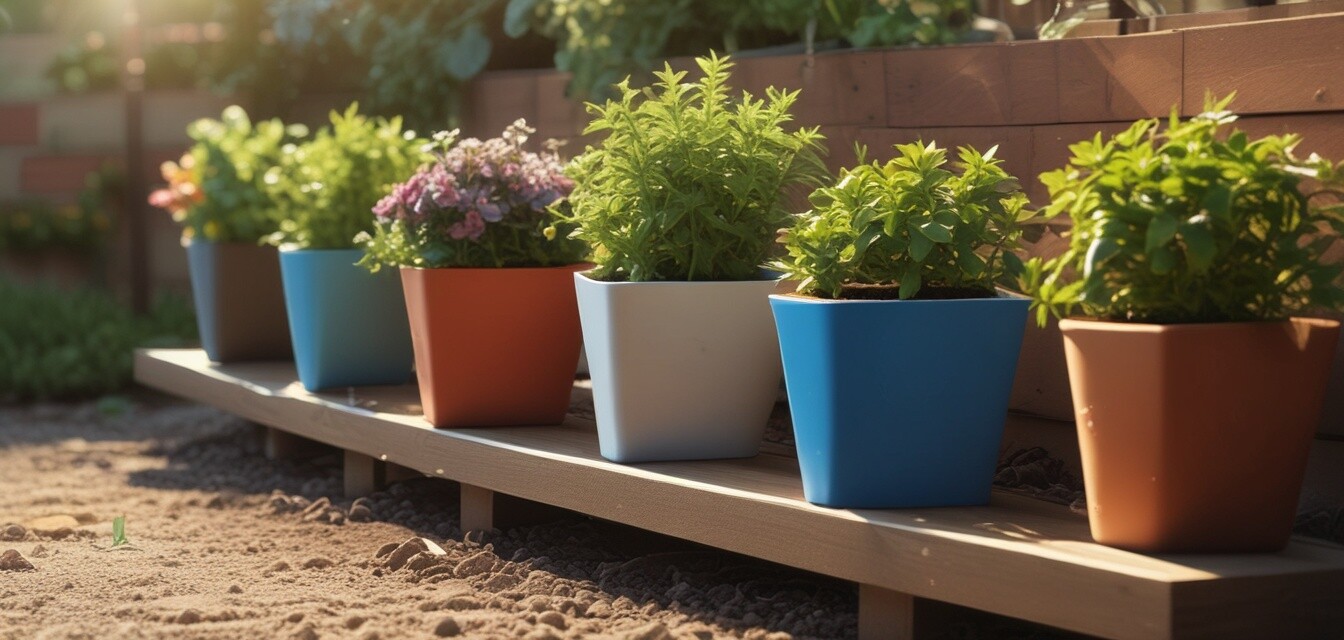
Top Features of Self-Watering Planters
- Self-watering planters provide consistent hydration for plants.
- They are ideal for busy gardeners, reducing maintenance needs.
- These planters help prevent overwatering and root rot.
- Available in various styles and materials to suit any garden aesthetic.
- Environmentally friendly options can conserve water usage.
If you're a busy gardener looking to simplify your plant care routine, self-watering planters might be the perfect solution for you. Designed with innovative features, these planters not only provide consistent hydration but also cater to various gardening styles and needs. In this guide, we’ll explore the top features of self-watering planters, ensuring you have all the information to make an informed decision.
What are Self-Watering Planters?
Self-watering planters are specially designed containers that allow plants to absorb water as needed. They have a reservoir system that hydrates the soil from the bottom up, ensuring plants receive adequate moisture without constant watering. These planters are available in numerous styles, making them suitable for both indoor and outdoor use.
Key Features of Self-Watering Planters
1. Water Reservoir
The primary feature of self-watering planters is their water reservoir, which can hold enough water for days or even weeks, depending on the size of the planter. This system helps reduce the frequency of watering.
2. Soil Moisture Gauge
Many self-watering planters come equipped with a soil moisture gauge. This tool gives you a visual indicator of the moisture level in the planter, helping prevent both underwatering and overwatering.
3. Drainage System
Proper drainage is crucial for plant health. Self-watering planters typically feature holes that allow excess water to escape, which prevents root rot and ensures that plants aren't sitting in waterlogged soil.
4. Variety of Designs
Self-watering planters come in various designs, colors, and materials. Whether you prefer a modern ceramic look or rustic wood, there's a planter to match your style. Explore options such as luxury planters to elevate your garden's aesthetic.
5. Eco-Friendly Materials
Increasingly, manufacturers are creating self-watering planters using sustainable materials. This is a great option for eco-conscious gardeners aiming to reduce their environmental footprint.
Advantages of Using Self-Watering Planters
Here are some advantages that make self-watering planters a game-changer for busy gardening enthusiasts:
Pros
- Provides consistent moisture to plants.
- Reduces the frequency of watering.
- Helps prevent overwatering.
- Saves water by optimizing usage.
- Available in various stylish designs.
Cons
- Initial cost may be higher than traditional planters.
- Some models may require more maintenance than others.
- Limited root space in smaller planters.
Choosing the Right Self-Watering Planter
When selecting a self-watering planter, consider the following factors:
- Size: Ensure it fits your plant choice and available space.
- Material: Choose between plastic, ceramic, or metal based on durability and aesthetic preferences.
- Design: Match the planter's style with your garden or home's theme.
- Water Reservoir Capacity: More significant reservoirs are suitable for larger plants or longer durations without watering.
Maintaining Self-Watering Planters
Maintaining self-watering planters is generally easy. Here are some helpful tips:
- Check the water level regularly to ensure the reservoir is full.
- Clean the reservoir and drainage holes periodically to prevent clogging.
- Use high-quality soil that promotes drainage and aeration.
- Monitor plant health and adjust the reservoir water accordingly.
Conclusion
Self-watering planters are an excellent investment for busy gardeners who want to maintain a beautiful collection of plants without the hassle of frequent watering. With their innovative features and conveniences, self-watering planters can help transform your gardening experience. Check out our extensive range of greenhouses and plant protection solutions to complement your gardening projects.